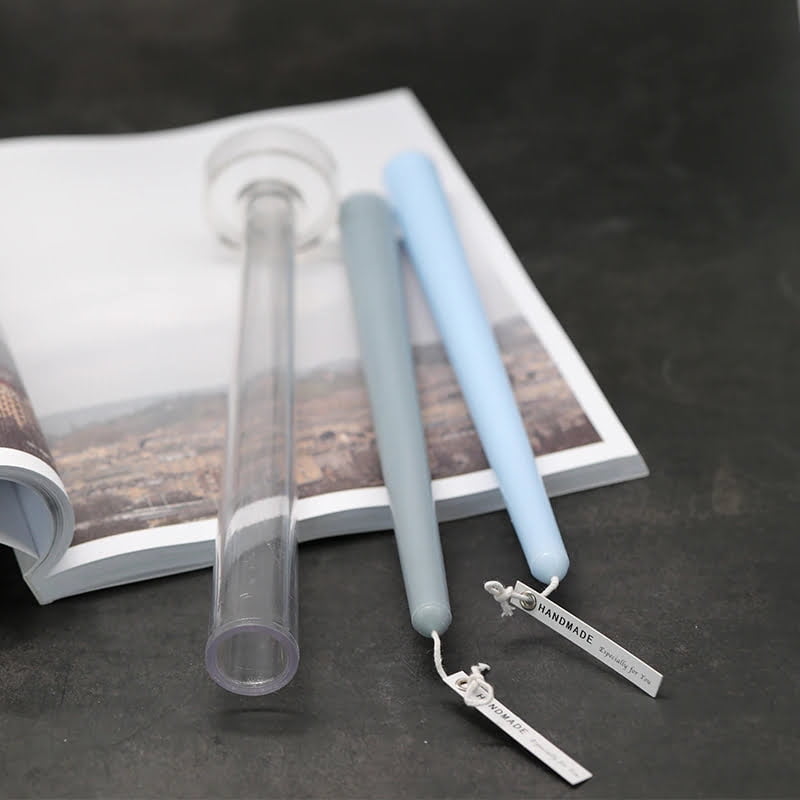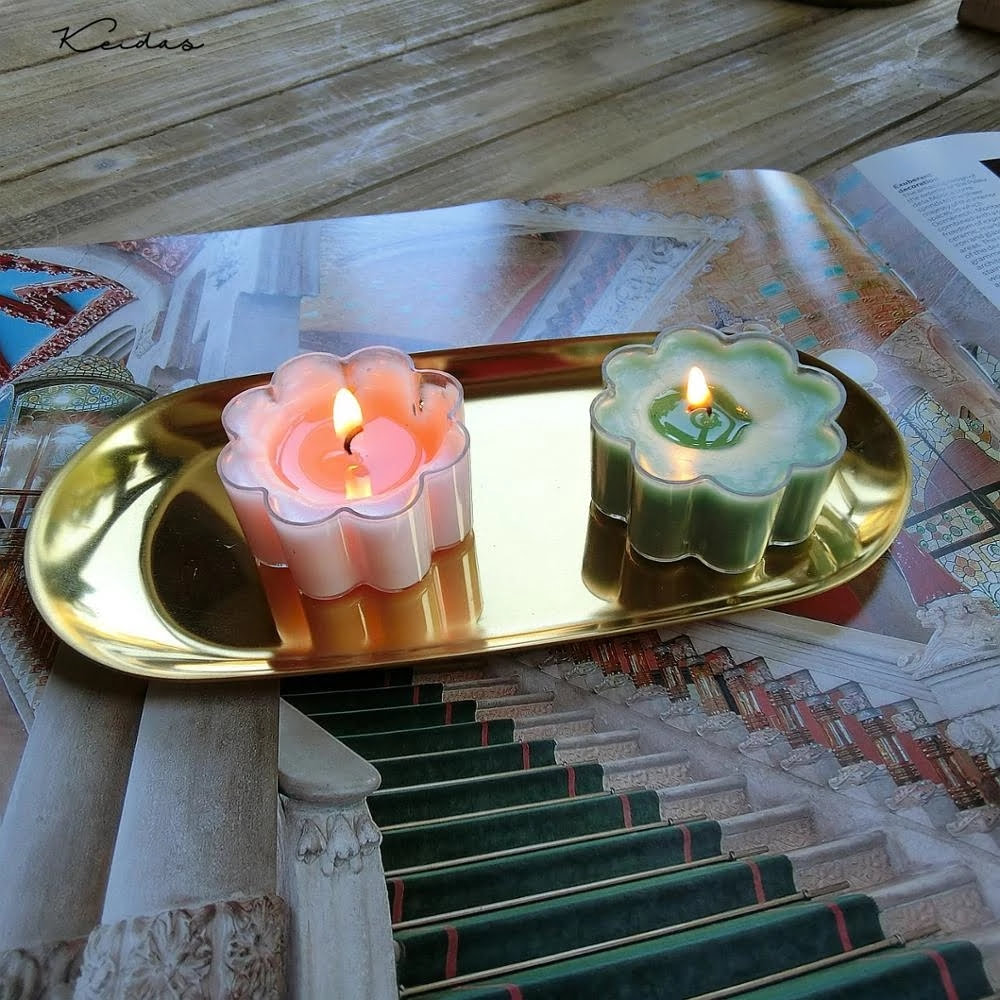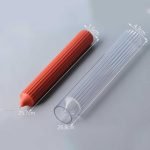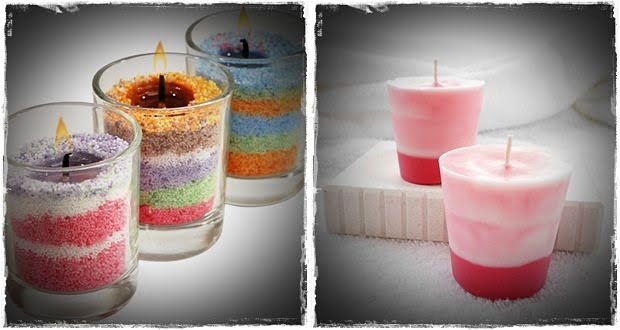Candle making is a beautiful and rewarding craft that allows individuals to create customized, aromatic masterpieces. However, one aspect that is often overlooked in the candle making process is proper cleaning. Cleaning up after candle making is essential to maintain a safe and organized workspace, as well as to prolong the life of your equipment and ensure the quality of future candles.
In this article, we will provide you with a comprehensive guide on candle making cleaning tips. From preparing your workspace to removing wax spills and residue, we will cover all aspects of keeping your candle making area tidy and efficient. Whether you are a beginner or an experienced candle maker, these tips will help you maintain a clean environment that promotes creativity and prevents accidents.
Proper cleaning not only ensures the longevity of your equipment but also enhances safety during candle making. Wax spills can be hazardous if left unattended, while residual dye stains can ruin future batches. By incorporating effective cleaning techniques into your candle making routine, you will minimize the risk of accidents or damage while producing high-quality candles.
Stay tuned as we delve into step-by-step guides for preparing the workspace, recommended tools and supplies for easy cleanup, removing various types of stains such as wax spills and fragrance oil spills, maintaining equipment hygiene, and implementing best practices to prevent messes in your candle making space. Let’s get started on creating not just beautiful candles but also an organized and clean workspace.
Step-by-Step Guide
When it comes to candle making, having a clean and organized workspace is essential. Preparing your workspace properly before starting the candle making process can make a big difference in the final outcome of your candles. In this section, we will provide you with a step-by-step guide on how to prepare your workspace for candle making.
The first step in preparing your workspace is to clean and clear the area where you will be working. Remove any clutter or unnecessary items from your work surface to create a clean and spacious area. This will not only help you stay organized but also reduce the chances of accidents or spills during the candle making process.
Next, it is important to ensure that all surfaces are clean and free from dust or debris. Use a damp cloth or cleaning spray to wipe down your work surface, as well as any tools or equipment that you will be using. This will help prevent any unwanted particles from getting into your candles and affecting their appearance.
Additionally, consider using protective covers such as tablecloths, mats, or wax paper to protect your work surface from any spills or stains. These covers can easily be cleaned or replaced after each candle making session, ensuring that your workspace stays clean and ready for future use.
By following these simple steps, you can create a clean and efficient workspace for candle making. Taking the time to properly prepare your space before beginning the candle making process will not only result in better quality candles but also make the entire experience more enjoyable and hassle-free. So remember, start with a pristine workspace for outstanding candle-making results.
Essential Cleaning Tools and Supplies
When it comes to candle making, proper cleaning is essential to ensure a safe and organized workspace. After creating your beautiful candles, it’s important to have the right tools and supplies on hand to clean up any messes that may occur. In this section, we will discuss the essential cleaning tools and supplies you’ll need to effectively clean up after candle making.
Gloves
First and foremost, wearing gloves is crucial when it comes to cleaning up after candle making. Not only will gloves protect your hands from hot wax and potentially harmful chemicals, but they also provide an extra layer of cleanliness. Make sure to choose gloves that are durable, heat-resistant, and comfortable to wear for extended periods.
Scrapers and Spatulas
Scrapers and spatulas are handy tools for removing excess wax spills and residue from surfaces. It’s important to have a variety of scrapers in different sizes to tackle different areas. Flexible rubber or silicone spatulas are ideal for collecting leftover wax from containers or molds as they can easily bend into tight corners.
Paper Towels or Rags
Paper towels or rags are essential for wiping down surfaces during the cleanup process. They are absorbent and disposable, making them convenient for soaking up small amounts of spilled wax or cleaning equipment. Additionally, having a lint-free cloth can be useful for drying delicate items without leaving behind any fibers or residue.
Hot Water and Soap
Having hot water and soap readily available is crucial for effectively cleaning candle making equipment. Hot water helps dissolve wax residue while soap aids in breaking down oils used in fragrance oils or dyes. Be sure to use a mild dish soap or specialized wax cleaner that won’t damage or stain your materials.
Isopropyl Alcohol
Isopropyl alcohol is a versatile cleaning agent that can be used to remove stubborn wax spills and tough stains. It evaporates quickly, making it ideal for cleaning surfaces without leaving behind any residue. When using isopropyl alcohol, make sure to do so in a well-ventilated area and avoid contact with open flames or sparks.
Having these essential cleaning tools and supplies readily available will make the post-candle making cleanup process much more efficient and convenient. By being prepared, you can maintain a clean and organized workspace, ensuring that your candle-making experience remains enjoyable and hassle-free.
Removing Wax Spills and Residue
Using Heat
One of the easiest ways to remove wax spills and residue is by using heat. Start by placing a clean cloth or paper towel over the wax spill and gently ironing over it with a warm iron.
The heat will melt the wax, allowing it to be absorbed by the cloth or paper towel. Be careful not to apply too much pressure or leave the iron in one spot for too long, as this can cause damage to the surface you are working on.
Freezing Method
Another effective method for removing wax spills is by freezing. First, allow the spilled wax to cool and harden completely. Then, use a blunt object such as a spoon or butter knife to carefully scrape off as much wax as possible from the surface.
Place an ice pack or a bag of ice cubes over any remaining residue and let it sit for several minutes until the wax becomes brittle. Once it has hardened, gently scrape it off with your blunt object.
Using Cleaning Solutions
If there are still traces of wax after using heat or freezing methods, you may need to employ cleaning solutions to tackle stubborn stains. For hard surfaces such as countertops or floors, use a solution of warm water and dish soap or vinegar to effectively break down the wax residue. Apply the solution to the affected area and scrub gently with a sponge or soft brush until all traces of wax are gone.
For fabric or carpet stains caused by candle wax spills, place a brown paper bag or several layers of paper towels over the stained area. Then, carefully apply gentle heat from an iron on top of the paper bag until the wax begins to transfer onto it. Change out the paper towels/bag as needed and repeat until all of the wax has been removed.
Remember to always test a small inconspicuous area first before applying any cleaning solution directly to a surface or fabric. This will help ensure that the solution is safe and does not cause any damage or discoloration.
Cleaning Candle Making Equipment
Proper cleaning and maintenance of your candle making tools is crucial for ensuring their longevity and the success of your future candle making projects. Whether you are a beginner or an experienced candle maker, it is important to know the right techniques for cleaning your equipment. In this section, we will explore some essential tips for cleaning candle making equipment effectively.
Cleaning the Pouring Pot
The pouring pot is one of the most important tools in candle making, as it is used to melt and pour wax. To clean your pouring pot, start by allowing any leftover wax to solidify completely. Once it has hardened, use a spoon or a dull knife to gently scrape off the excess wax.
Next, fill the pot with hot water and a few drops of dish soap. Let it soak for about 15 minutes before scrubbing it with a non-abrasive sponge or brush. Rinse thoroughly with warm water and dry it completely before storing.
Cleaning Wax Thermometers
Wax thermometers are essential for determining the optimal temperature for melting and pouring wax. To clean your thermometer, start by wiping off any excess wax using a paper towel or cloth while being careful not to break the glass tube. Next, fill a container with warm soapy water and immerse the thermometer into it without letting the liquid touch the top part where the temperature readings are located.
Gently swirl the thermometer around in the soapy water to remove any remaining residue. Rinse it off with clean water and allow it to air dry before storing.
Cleaning Molds
Whether you are using metal molds or silicone molds for candle making, proper cleaning is essential to remove any residual wax or debris that may affect future candles’ appearance. Start by allowing the mold to cool down completely before attempting to clean it. If there are any stubborn wax remnants, place the mold in the freezer for a few minutes to harden the wax, making it easier to remove.
Once hardened, gently scrape off the wax using a plastic scraper or your fingers. Then, wash the mold with warm soapy water, using a soft cloth or sponge to remove any remaining residue. Rinse thoroughly and dry completely before storing.
By following these proper techniques for cleaning candle making equipment, you can ensure that your tools remain in good condition and ready for use in future projects. Regular maintenance will not only extend their lifespan but also contribute to producing high-quality candles consistently.
Cleaning Wax Melting Pots
Cleaning a wax melting pot is an essential part of candle making maintenance. Over time, residual wax can build up in the pot, affecting the quality and scent of future candles. In this section, we will explore some tips and tricks for effectively cleaning wax melting pots to ensure optimal performance.
To start, it is important to allow the wax melting pot to cool completely before attempting to clean it. Trying to clean a hot or warm pot can be dangerous and may result in burns. Once the pot has cooled down, you can begin by scraping off any excess solidified wax using a plastic scraper or spatula. Be careful not to scratch the surface of the pot while doing so.
Next, you will need to melt any remaining wax residue in the pot. One method is to fill the pot with warm water and place it back on the stove over low heat until the wax liquefies. Stirring gently can help speed up the process. Another option is to use a hairdryer on low heat setting to melt and loosen any residual wax.
Once all the wax has melted, carefully pour it into a disposable container or old jar that can be easily discarded. Avoid pouring hot water with melted wax down your sink as it can cause clogs and plumbing issues. Wipe out any remaining residue from the pot using paper towels or disposable cloths. For stubborn spots, you can use a soft cloth dipped in rubbing alcohol or vinegar solution to dissolve and remove them.
Lastly, rinse the pot thoroughly with warm soapy water and dry it completely before storing or using again for candle making. This extra step ensures that no residue or cleaning agents remain in the pot, which could potentially affect your next batch of candles.
By regularly cleaning your wax melting pots following these tips and tricks, you’ll maintain their longevity and efficiency for future candle making projects. A clean pot not only allows for better fragrance blending but also prevents cross-contamination between different candle scents. Remember to always prioritize safety and handle the cleaning process with care to avoid any accidents or injuries.
Removing Candle Dye Stains
Candle making can be a messy process, especially when it comes to dealing with dye stains. Accidental spills and splatters can leave unsightly spots on your work area, clothes, or other surfaces. Fortunately, there are effective methods you can use to eliminate dye spots and restore cleanliness.
1. Blotting: As soon as a dye spill occurs, it’s important to act quickly. Take a clean cloth or paper towel and gently blot the affected area to absorb as much liquid as possible. Avoid rubbing the stain, as this may spread the dye further.
2. Dish soap and water: For small dye spots on washable fabrics or hard surfaces such as countertops, mix a few drops of dish soap with water and create a soapy solution. Dip a sponge or cloth into the solution and gently dab the stained area. Rinse with clean water and repeat if necessary.
3. Vinegar: Vinegar is another useful ingredient for removing candle dye stains. Mix equal parts of white vinegar and water in a spray bottle. Spray the stained area generously and let it sit for a few minutes before blotting with a clean cloth or paper towel. Rinse with water afterward.
4. Hydrogen peroxide: Hydrogen peroxide can also be effective in treating candle dye stains on white or colorfast fabrics (always test an inconspicuous area first). Dampen the stained area with hydrogen peroxide and let it sit for about 30 minutes before rinsing with water.
Remember to always read label instructions before using any cleaning products or solutions, as some fabrics or surfaces may require specific care. With these methods at hand, you can confidently tackle any candle dye stain that comes your way during your candle making journey.
Cleaning Fragrance Oil Spills
Spilled fragrance oil can be a common occurrence during the candle making process. Whether you accidentally knock over a bottle or spill while measuring, it is important to know how to handle and clean up the spill effectively. Not only will this prevent stains and damage to your workspace, but it will also ensure that the fragrance oil is not wasted.
To begin cleaning up a fragrance oil spill, it is crucial to act quickly. The longer the oil sits on surfaces, the harder it can be to remove. Start by grabbing paper towels or absorbent cloths and immediately blotting the area where the spill occurred. Be sure not to rub or wipe as this can spread the oil further.
Next, sprinkle some baking soda or cornstarch onto the affected area. These powders are great at absorbing liquids and can help pull up any remaining oil from porous surfaces like wood or fabric. Let the powder sit for a few minutes before gently sweeping or vacuuming it up.
If there is still an oily residue left after using baking soda or cornstarch, you can use rubbing alcohol or dish soap to further break down the oil. Apply a small amount of either solution onto a clean cloth and dab at the stain until it starts to fade. Remember to always test any cleaning product on a small, inconspicuous area first to make sure it does not cause any damage.
| Surface Type | Cleaning Method |
|---|---|
| Hard Surfaces (Non-Porous) | Blot with paper towels, then wipe with rubbing alcohol. |
| Fabric | Blot with paper towels, sprinkle baking soda/cornstarch, vacuum/sweep, and dab with dish soap. |
| Carpet | Blot with paper towels, sprinkle baking soda/cornstarch, vacuum/sweep, and dab with rubbing alcohol. |
Remember to always clean up fragrance oil spills promptly to avoid any staining or damage. By following these tips and using the appropriate cleaning methods, you can effectively handle and remove fragrance oil spills while maintaining a clean workspace.
Safety Tips
Candle making can be a fun and rewarding hobby, but it’s important to prioritize safety while cleaning up after each session. There are several potential hazards involved in the cleaning process, but with the right precautions and knowledge, accidents can be avoided. This section will outline some safety tips for cleaning candle making equipment and handling cleaning supplies.
One of the main hazards when cleaning up after candle making is the hot wax. It’s essential to let the wax cool completely before attempting to clean or remove it. Trying to clean hot wax can result in burns or other injuries. To speed up the cooling process, you can place the affected items in a refrigerator or freezer.
When working with cleaning supplies, such as solvents or detergents, it’s crucial to use them according to their instructions and guidelines. Some cleaners may be flammable or have harsh fumes, so it’s essential to work in a well-ventilated area and wear appropriate protective gear, such as gloves and goggles.
In addition to handling equipment safely, it’s also important to properly dispose of any waste generated from candle making cleaning. Wax scraps, used paper towels, and other materials should be disposed of following local regulations and guidelines. This prevents environmental contamination and reduces fire hazards.
Overall, being aware of potential hazards and taking necessary precautions is key when it comes to cleaning up after candle making. By following safety tips such as allowing wax to cool completely before cleaning, using cleaners correctly, and disposing of waste properly, you can create a safe environment for yourself and others while enjoying your candle making hobby.
| Safety Tip | Description |
|---|---|
| Allow wax to cool completely before cleaning | Hot wax can cause burns if not handled carefully. |
| Work in a well-ventilated area | Some cleaning supplies may have harsh fumes, so it’s important to have adequate ventilation. |
| Wear gloves and goggles | Protective gear will prevent direct contact with cleaning solutions that can irritate the skin or eyes. |
| Dispose of waste properly | Following local regulations for waste disposal prevents environmental contamination and reduces fire hazards. |
Maintaining a Clean Candle Making Environment
In conclusion, maintaining a clean candle making environment is essential for not only creating beautiful and high-quality candles but also ensuring the safety of yourself and your workspace. By following the best practices outlined in this guide, you can easily stay organized and prevent messes during the candle making process.
Firstly, it is crucial to prepare your workspace properly before starting any candle making project. This includes gathering all necessary tools and supplies, as well as properly cleaning your work area. By decluttering the space and removing any potential hazards, you can create a clean and safe environment for candle making.
Additionally, proper cleaning techniques should be followed throughout the candle making process. Whether it’s removing wax spills or residue, cleaning candle making equipment, or eliminating dye stains and fragrance oil spills, having the right tools and knowledge is key. By using appropriate cleaning products and techniques, you can easily tackle any mess that may occur during the candle making process.
Lastly, it is important to always practice safety measures while cleaning up after candle making. This includes being aware of potential hazards such as hot wax or fragrance oils and taking steps to prevent accidents. By wearing protective clothing and handling materials with care, you can ensure a safe cleaning experience.
In conclusion, by following these best practices for maintaining a clean candle making environment, you can enhance both the quality of your candles and your overall experience as a crafter. With proper preparation, diligent cleaning techniques, and a focus on safety precautions, you can create stunning candles in a clean and organized workspace. So keep these tips in mind for your next candlemaking project.

Welcome to my candle making blog! In this blog, I will be sharing my tips and tricks for making candles. I will also be sharing some of my favorite recipes.





